


After various COVID-related delays, Stephan finally got to celebrate his inauguration as Professor at the Dept of Drug Design and Pharmacology. Huge thanks to all lab members (past and present), colleagues and collaborators – it would have never (ever) happened without you!

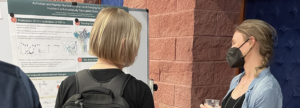

Stephanie and Stephan got to attend the GRC on ligand recognition and molecular gating in Lucca, Italy. The densely-packed program did not leave much time to admire the achingly beautiful surroundings, but the science was top-notch. Big kudos to the organisers!
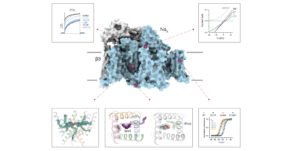
Our latest collaboration with the Payandeh and Ciferri groups at Genentech reveals the structure of human Nax/Nav2.1 in complex with Nav beta3; now out in Nat Comms. Despite looking very similar to Nav/Cav channels, its functional properties appear to diverge substantially: numerous lipids populate the pore, physiological activation mechanism remains elusive, but channel engineering suggests it is non-selective among monovalent cations, inhibited by TTX, Ca2+ and some Nav inhibitors. Cameron Noland and Marc Kschonsak spearheaded the structural efforts, while Chow masterminded the functional interrogations on our end, together with Stephanie and Nina. Big thanks to everyone one involved. Now all we need is somebody to find out how this channel is activated endogenously…
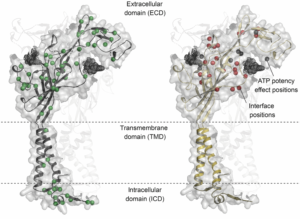
After years of delays, our work on the intersubunit interfaces of P2X2 receptors finally got published! We show that subunit interfaces are missense mutation hotspots & mutations here tend to increase apparent ATP affinity. Huge thanks to everyone involved, in particular Federica Gasparri for her patience, Alexander Hauser for his contribution to the population analysis and Debayan Sarkar for getting it over the line!

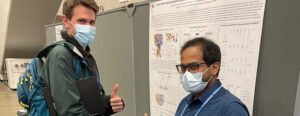
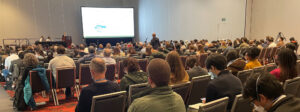
Biophysics 2020 was the last in-person meeting pre-Covid, so it was only fitting that Biophysics 2022 would kick off real-life conferences again. Although only Debayan and Stephan made it to California in the end, the lab was strongly represented with 2 talks and 3 posters. Definitely exciting to catch up with friends and collaborators in person again – and big thanks to the organisers for an outstanding and diverse program, as well as for providing a safe environment.
After many years of work, our epic effort into figuring out the mechanism and stoichiometry of how the peptide toxin PcTx1 inhibits ASICs is finally published in eLife. This really was a long-term effort and a great collaboration between Stephanie and Christian – thank you for your persistance and for generating very thorough mechanistic insight into this tricky problem!
Yesterday, it was time to say farewell to our 2021-2022 lab technician intern Marijana. Big thanks for all her help and we wish her all the best for the future! Today, we say hi to Fadumo, who will be our 2022-2023 lab technician intern – welcome to the team!
Today, Nadine Ritter joins us as a visiting PhD student from the University of Muenster, Germany. She will be working on NALCN with Sam for the next 4 months. Welcome and we look forward to having you around.
While we say hello to the new year, I would like to take the opportunity to thank the amazing Pless lab team for hanging in there during the past 12 months. Certainly not everything went to plan and Corona did its best to make things tricky, but I am very grateful for everyone’s efforts and enthusiasm to push things forward! Here is to the new year, along with all the highs and lows it may bring. Looking forward to seeing all the exciting projects progress!
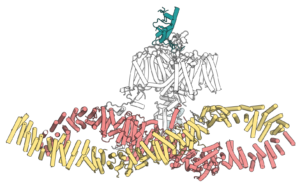
After years of work and a big team effort, our structure-function effort on the entire NALCN channelosome is now published in Nature. Together with our fantastic collaborators (Payandeh and Ciferri labs @ Genentech, Manu Ben-Johny @ Columbia, and Alexander Leitner @ ETH), we show that UNC79/80 form a massive figure-8-like HEAT repeat assembly below the channel, CaM co-purifies as a surprise passenger and single channel data reveal very low Po. Check out all the details HERE. Congratulations to the entire team, especially Marc Kschonsak and Han Chow Chua, who took the lead on deciphering structure and function of this massive complex. We are very grateful for support by the Carlsberg Foundation, DFF and the Lundbeck Foundation. Lastly, congratulations also to Kang & Chen, who preprinted very similar work HERE.














